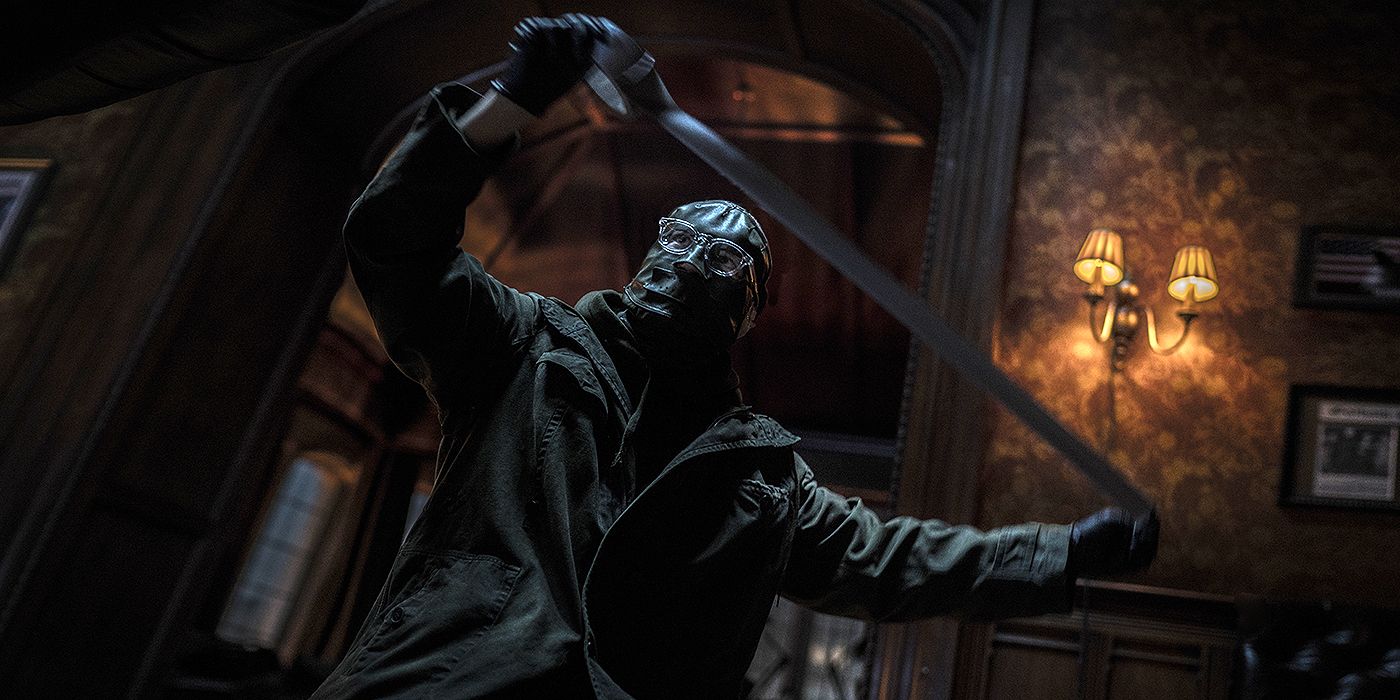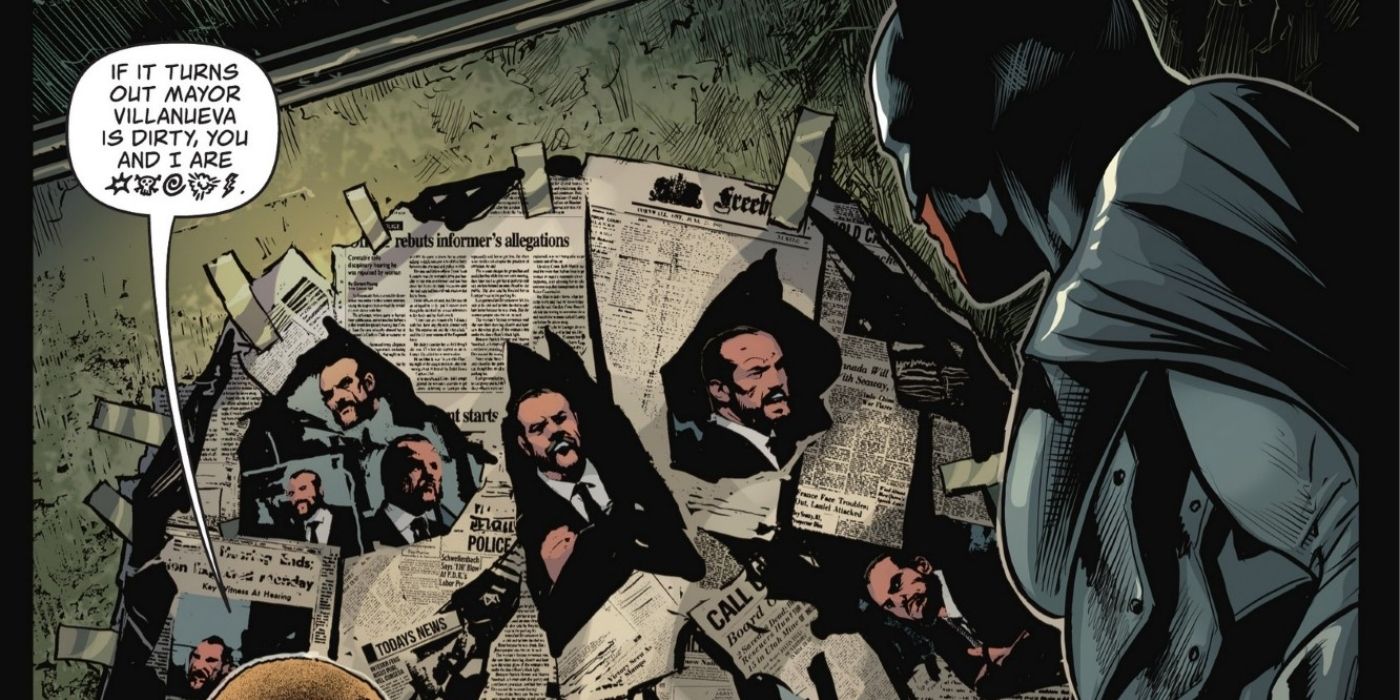From the moment he made his existence known in I Am Batman #7 (by John Ridley, Christian Duce, and Troy Peteri), the mysterious Manray has left a chilling impression on both Timothy “Jace” Fox’s Batman and the people of New York City. While this new foe doesn’t appear to have any direct ties to the assortment of costumed criminals that Jace had hoped to leave behind when he traded Gotham City for the Big Apple, he does share several uncanny similarities with the version of the Riddler (played by Paul Dano) introduced in Matt Reeves’ The Batman feature film.
Given the decided popularity of Dano’s performance, it’s only natural that the Dark Knight of New York’s first costumed rogue would incorporate some elements from a very different interpretation of one of Batman’s oldest enemies. However, while there are many parallels between Manray and Dano’s Riddler, the differences between them are drastic enough to ensure that Manray remains an original and terrifying entity within the Batman comic book mythos.
The similarities between Manray and the Riddler are clear at first glance. While there are subtle differences between their choices of attire, both villains are cloaked in thick heavy costumes that hide their faces and (presumably, in Manray’s case) distort their voices, disguising their true identities. The two villains are also both serial killers who prefer to avoid directly confronting law enforcement, leaving behind messages to intimidate and confuse those who stand in the way of their work.
In addition, Manray and the Riddler also share similar tastes when it comes to victims. Rather than indiscriminately targeting random people, Manray and the Riddler view themselves as agents of justice, going after members of their city’s political elite who use their wealth and influence to rig the system in their favor and dispose of any evidence that could reveal their wrongdoings. After killing their intended targets in sadistic and slow ways, both villains make sure to release evidence of their victim’s corrupt nature, exposing whatever secrets they may have taken to their graves and ensuring that their legacy will be forever tainted.
However, the most glaring similarity between the two villains is Manray and Riddler’s mutual respect for their respective Batmen. During their first interaction, Manray openly expressed his admiration for New York’s Batman, casually greeting the Caped Crusader once he arrived at his hideout and inviting him to collaborate with him on his next “project.” The affection that Dano’s Riddler had for Robert Pattinson’s Batman goes even further, as he actively goes out of his way to pull Batman into his twisted game by sending him personal messages. When the two finally meet face-to-face in the film’s now-iconic interrogation scene, Riddler reveals that he believes he and Batman were working together all along.
However, while their many similarities between Manray and the Riddler, there are several differences between them. The most drastic of them is how each of them presents their crimes. While neither of them tries to hide their gruesome act of murder and actively wants people to know what they’ve done, Manray and the Riddle have drastically different “aesthetics” as serial killers. During his first appearance, Manray established himself as a visual artist, presenting the mutilated corpses of his victims as public art pieces, visually drawing out what he sees as their true nature for all to see. In contrast, the Riddler preferred to use wordplay, using carefully-crafted riddles to lead people along like a twisted storyteller.
Each villain also has a very different approach when it comes to presenting themselves and fulfilling their respective goals. Throughout The Batman, the Riddler works to establish himself as a public figure, actively engaging with the public through social media and cultivating a loyal following of fellow lost souls disillusioned with life in Gotham. Meanwhile, Manray, at least at the moment, seemed content to be an anonymous agent, leaving only a simple signature at the scene of his crimes and allowing the public to interpret what he’s trying to say for themselves, fitting his aesthetic as a street artist.
Reflecting this difference in temperament, Manray and the Riddler’s reaction to learning that their admiration for their respective Batmen isn’t mutual. When the Riddler learned that Batman sees him as nothing more than a delusional killer, and more importantly hadn’t figured out the final piece of his puzzle, he suffered a severe nervous breakdown. When Manray learned that the Batman of New York planned to turn him over to the police, he simply shrugged it off, expressing only mild disappointment as he proceeded to use his surprising strength and improvised weapon to beat his Dark Knight within an inch of his life.
Read Next
About The Author



